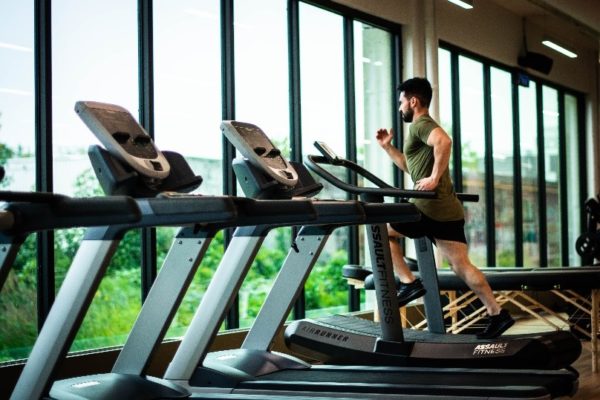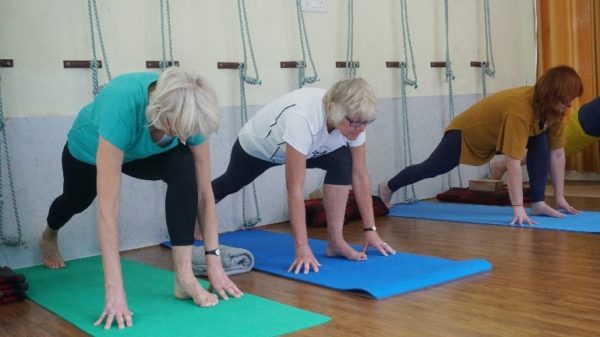 Most people who work in public sector leisure, sport and physical activity would be able to sketch out the typical facility mix for a leisure centre built or planned in the last 5 years on the back of an envelope. They follow a pretty standard model: decent sized gym, 2-3 group ex studios, sports hall, main pool and learner pool café. Pick and mix of optional extras subject to demand, space and budget.
Most people who work in public sector leisure, sport and physical activity would be able to sketch out the typical facility mix for a leisure centre built or planned in the last 5 years on the back of an envelope. They follow a pretty standard model: decent sized gym, 2-3 group ex studios, sports hall, main pool and learner pool café. Pick and mix of optional extras subject to demand, space and budget.
There’s a reason that this has been the basis for so many facilities in recent years. If done well, it ticks a lot of boxes – fills gaps left by the private sector for swimming and sports hall provision, bridges the gap between premium health clubs and budget gyms, gives the public sector a facility-based focal point from which to seek to address inactivity levels and helps provide for statutory swimming requirements at Key Stage 2. And, crucially, it’s pretty sustainable from a financial perspective. Or at least it was.
This facility model was built on the foundation of two key income areas: health and fitness and swimming. In 2019/20 in England, health and fitness income made up nearly 45% of the revenue base of public sector leisure facilities. Swimming made up nearly another 35%, split between swimming lessons and other swimming income.[1]
Health and fitness, in particular, was the gift that kept on giving. Year on year growth – from a nationwide membership penetration rate of 11.9% in 2011[2] to 15.6% in 2019[3], equivalent to 10.4 million members – had us all convinced that this wave would last forever. But nobody expects the global coronavirus pandemic…
Since facilities have reopened and restrictions limiting activity types and capacity gradually lifted, the sector’s recovery has been carefully monitored from all sides by operators, local authorities, governing bodies and others. Each hoping to see signs of customers flocking back to the public leisure facilities that stood empty during the lockdowns – impotent even as central government made the most vocal endorsements of the importance of physical activity that we have seen as a sector.
The reality has not been as promising as many had hoped. After some steadily increasing throughput figures as restrictions lifted, the recovery has plateaued somewhat. Swimming, particularly swimming lesson, numbers are strong but dragging its heels is health and fitness. Backbone of the pre-Covid business model; thorn in the side of the recovery.
It’s easy to see why the return of gym members has been slow. Whilst swimming is hard to replace or replicate anywhere else, gym sessions might be reasonably substituted by a run or cycle outdoors and / or home-based workout routine. It’s what most people trying to stay active during lockdowns turned to and for some it seems to have stuck. It’s cheaper, probably more convenient, and if you’re still nervous about the risks of exercising in an indoor environment alongside other people, perceived as safer too.
Moving Communities’ national data for September 2021 suggested that health and fitness income was at c. 91% of the same time in 2019. That might not seem like much of a drop and it’s true, the recovery is ongoing. The problem is, that figure hasn’t meaningfully increased in the last couple of months, and when the pre-covid cost recovery rate at public leisure facilities is less than 105% and health and fitness income was nearly half your income pre-covid, a drop of 10% is what takes you out of the black and into the red.
And this 10% drop in income, supported by higher levels of income per visit, seems to disguise a more significant fall in terms of throughput. An anomaly in the way throughput for “other” activity was categorised previously means it is impossible to tell from the Moving Communities data, but our experience and anecdotal evidence from the sector suggests membership numbers compared with pre-covid are still at significantly less than 90%.
So, are we seeing a permanent shift in people’s behaviour? Will health and fitness ever recover to previous levels and back to its pre-Covid growth trajectory, or do we need to fundamentally reconsider the business model on which public leisure facilities have been based?
The truth is, none of us know. It may be that as winter starts to bite and New Year offers start to appear, people are coaxed back into centres and a monthly direct debit commitment. It’s possible that booster jabs, pandemic-fatigue and a craving for a return to normality slowly starts to overwhelm the residual fear and caution. Or Omicron could send us back into restrictions, reinforce the concerns of the already nervous and create a new setback to the sector’s recovery.
The health and fitness market for public sector leisure facilities might yet recover given time – I hope it does. But it’s time that we gave serious consideration to the possibility that it won’t. Or at least that the market won’t be the same. What would this mean for existing facilities and their sustainability? How would it change the business case for new facilities to replace our ageing stock?

There are a number of options to consider. Some come down to marketing, programming and operational changes in an attempt to attract new user groups (or old user groups back). Others may be more fundamental changes to the nature and design of public leisure facilities in an acknowledgement that maybe people don’t want big gyms in the future. And there may be an element of needing to accept that the financial performance of local authority leisure facilities might not be as strong in the future as some have been in the last decade – but that there are many other reasons for the public sector to support investment in leisure provision.
The demographics of those people that are returning to public leisure facilities might suggest a possible shift in focus for facility operators to consider. The return has been much stronger amongst younger age groups and within the lower socio-economic groups. We can speculate about the reasons for this, but broadly it’s assumed that this reflects the fact that:
- Younger people feel less at risk from Covid-19 and so are less likely to be concerned about a return to indoor exercise
- Both younger people and lower socio-economic groups, particularly in urban areas, are more likely to have more limited living space, given them fewer opt
ions for working out from home and creating a greater reliance on provision outside the home.
But public leisure facilities are far from their only option. Budget gyms provide a cheap alternative for these groups if their focus is on gym sessions, and in many cases greater convenience with 24-hour access to accommodate shift workers and night owls. The Guardian reported in September that The Gym Group was looking to expand based on the strength of its recovery, having recovered 82% of its February 2020 membership by the end of June. It also noted that more than two-thirds of its members were under 34.[4]
For the most part, public leisure facilities have tried to avoid being in direct competition with budget gyms. The offer, and the objectives, are different and so is the customer base. If all you want is a big room with some decent kit in which to do your workout at a time that suits you, there are probably more cost-effective options than your local leisure centre. But maybe that needs to change. Can public leisure providers afford to ignore such a large section of the market? Are there ways that membership / pricing options, and the planning and programming of gym space can be redesigned to claim a share of this market?
To be honest – particularly given the greater flexibility of the private sector to adapting its offer in response to market conditions, I’m not convinced that’s a battle that public leisure providers can win. Or that it should want to. After all, this isn’t just about numbers. If all you’ve done is coax the already active from another facility to yours is that really meeting the objectives of the service? Particularly if it’s at the cost of meeting the needs of the less active; those who would never consider joining a budget gym, put off or intimidated by the atmosphere of pulsing music, sweat and flexing.
Instead, providers could look to go the other way. Focus on the older people that have returned in fewer numbers and on providing a more accessible and supportive offer in direct contrast to what’s on offer at a budget gym. That’s not to say it would be straightforward. Achieving it would be easier said than done and some level of trial and error would be required. A few things that might help?
- Clear communication of measures that give confidence to potential customers that their facilities are Covid-safe environments in which to exercise.
- Maintaining (or reintroducing) booked gym sessions and promoting low occupancy levels to improve the perception of safety – even if only at specific times
- Increased visibility and approachability of staff, trained and given a mandate to support customers in identifying and working towards their goals
- Personalised support and health plans, supported by a varied programme of fitness and wellbeing classes
- Demonstrating an ability and a willingness to innovate and try new things in order to meet the varied needs of customer through a hybrid approach, including indoor provision, digital and at-home support and even outdoor programming and engagement.
And looking forward, we may need to look beyond large gyms for revenue streams to support the sustainability of our public leisure facilities. New and existing gyms might be split and redesigned to better serve the needs of a health-based offer with consultation rooms, specialist equipment and softer design – hopefully reflecting stronger links and collaborative relationships with Public Health, possibly supported by commissioning. Shifting focus away from a traditional “leisure” offer and towards wellbeing must be the next step for our sector and facilities will need to reflect and adapt to the shift in focus.
As for how it affects the business case for investing in public leisure provision, there are lots of reasons to support the case for investment. Our ageing leisure stock can’t be propped up for ever, particularly as the costs of doing so continue to escalate and their inefficiency acts as a financial drain and environmental liability. We’ve also seen that newer facilities are recovering faster – customers are more inclined to go back if facilities are more modern – so sticking with a facility that has gone beyond its useful life is likely to depress rather than stimulate demand. The revenue returns for new leisure provision may not be as strong as they once were, but the “do nothing” option is starker than ever.

The Climate Emergency and focus on decarbonisation should be another obvious driver for investment. When leisure facilities account for 40% or more of the direct carbon emissions of some Councils, how can they afford to keep the oldest and most inefficient going?[5]
But ultimately, a decision to invest comes down to what we want to achieve through our public leisure provision. They deliver huge social value and health benefits, act as focal points for communities and support any number of schools, clubs and individuals with their facilities and programmes. Without them, where will children learn to swim? How will schools deliver their PE curriculums? Where will sports clubs and other voluntary organisations deliver the sessions and programmes that support the activity of so many? And how can the public sector hope to reduce health inequalities through increased physical activity without the assets that enable people to be active?
Where the recovery ultimately takes us in terms of the demands of the market and the strength of the existing business model remains to be seen. A watchful eye will be kept on the figures being returned each month whilst all parties hope for and work towards the strongest possible recovery. But at the same time, those in positions of strategic leadership must maintain a focus on who and what the facilities are for; on the quality of the outcomes not just the numbers through the door or pounds in the till.
The case for investment in leisure, sport and physical activity services and facilities will have to be built on the benefits it can bring to people’s lives. To some extent that has always been the case, but if we can no longer rely on a positive commercial position in the future, the sector will need to work much harder on selling these benefits – and delivering them!
Anna Dalton, Director
anna@slc.uk.com
[1] Moving Communities – Income breakdown by area: Health & Fitness 44.31%, swimming lessons 17.60%, swimming other – 15.05%.
[2] 2011 FIA State of the UK Fitness Industry Report, Fitness Industry Association.
[3] 2019 State of the UK Fitness Industry Report, The Leisure Database.
[4] The Guardian, Gyms eye empty shops for extra space as UK returns to the treadmill, 2nd September 2021. https://www.theguardian.com/business/2021/sep/02/gyms-eye-empty-shops-for-extra-space-uk-treadmill-gym-group-membership
[5] APSE, Securing the future of public sport and leisure services, September 2021.

